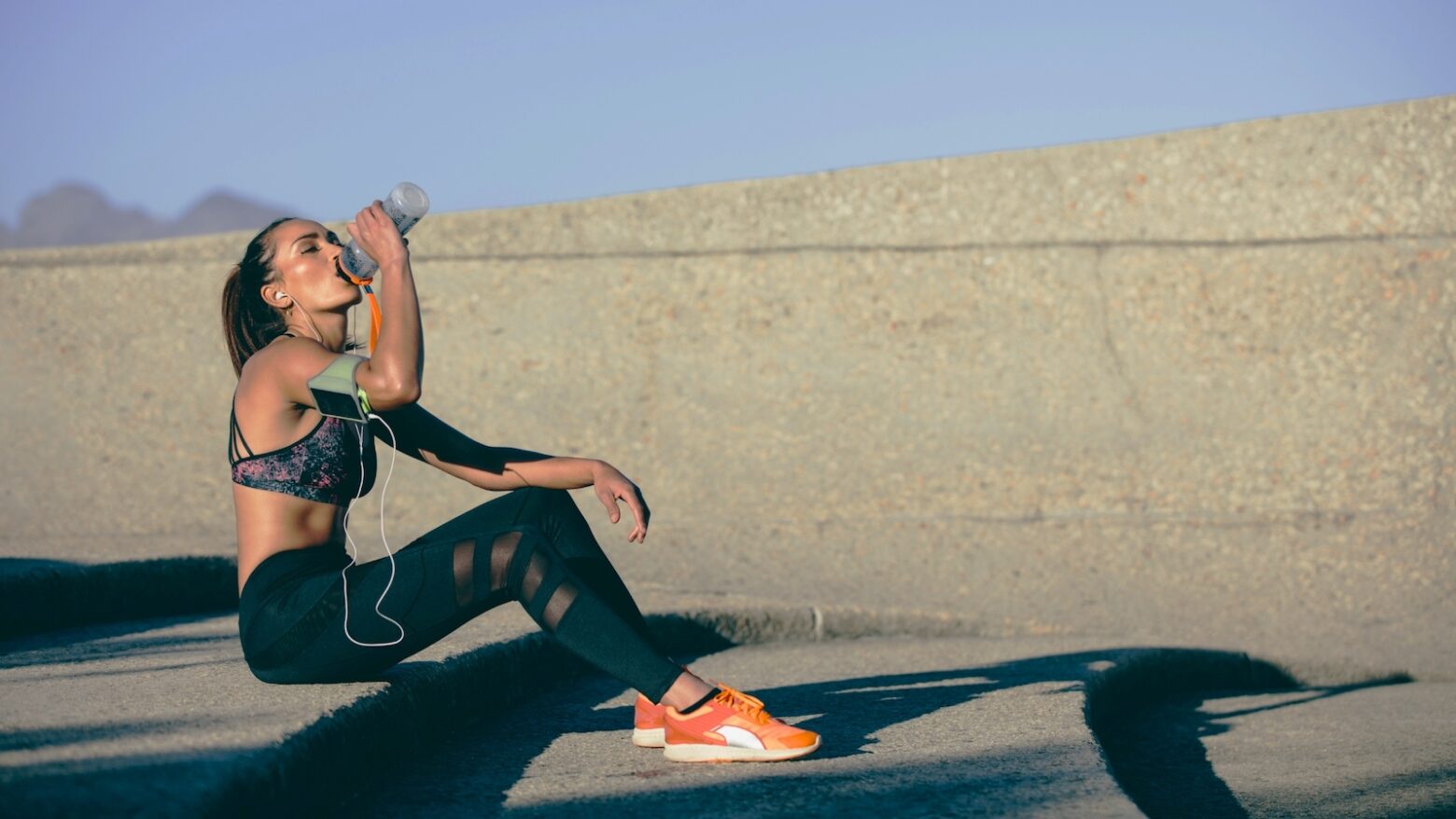Hydration for Athletes: Should You Drink When Thirsty or on a Schedule?

As we move into the summer, the competitive season for endurance sports hits full swing. Regardless if you’re an experienced runner or a novice, you’ve likely been reminded by your coach or peers to drink enough water when training. For years the recommendation from coaches has been to drink before you are thirsty to prevent dehydration and subsequent decrements in performance. But if you aren’t racing at the front of the pack, do you really need this much water?
Hydration is a hot topic and it’s divided into two main camps: the traditional view which believes you should pre-hydrate by drinking 8 cups of water daily, versus a growing group that believes you should only drink when thirsty. It can be a complicated topic, especially when the men and women in white lab coats can’t even agree on the best strategy. So, what are the best guidelines for you?
Recommended Guidelines on Athlete Hydration
The American College of Sports Medicine’s (ACSM) recommendation for endurance athletes is to consume 5-7ml of water per kilogram of bodyweight in the four hours before exercise. This translates to approximately 340-477ml for a 150 lb. female and 455-636ml for a 200 lb. male. The general recommendation is to drink until your urine is clear. This seems very reasonable, so why the sudden change in thinking?
Unfortunately, it’s not quite that straightforward. Just because you drink water doesn’t mean you’re absorbing the water. The composition of the water largely determines how much you absorb. If you drink distilled water with no salt, you won’t absorb the water and you’ll begin to deplete your blood sodium levels, leading to hyponatremia.
The Dangers of Too Much Water
Hyponatremia sets in when the fluids you consume are greater than the amount of fluids you lose via sweat. Common symptoms of hyponatremia include nausea, muscle weakness, and disorientation, which can be easily confused with symptoms of dehydration. The problem becomes dangerous if you give a person suffering from hyponatremia more water. Increased water will further dilute their blood sodium levels which can lead to cerebral edema, pulmonary edema, and death.
When a Boston marathoner died of hyponatremia in 2002 the wheels were put into motion to find the answers behind what hydration strategy is safest for all athletes. This led to the recent “drink to thirst” stance on hydration and a new set of recommendations.
New Thinking: Athletes Should Drink to Thirst
In fact, this new thinking goes all the way back to the early 1990s when a ground-breaking study was published by Dr. Tim Noakes, Ph.D., and his colleagues regarding the potential danger of overconsuming water during exercise. Contrary to popular belief, they found drinking too much water was far more dangerous than not drinking enough. The body’s inherent mechanism to maintain hydration balance has since been shown to be more than enough to keep you hydrated and prevent the catastrophic effects of hyponatremia. This has led to changes in recent recommendations for endurance athletes to simply “drink to thirst.”
What Isn’t Discussed: What’s in Your Water?
The composition of your water—specifically the amount of salt and carbohydrates—plays a major role in hydration and your capacity to actually absorb the water you are drinking. Just because you drink a lot of water doesn’t mean you’re hydrated. If you pee just as much as you drink, you’re likely not making the most of your water intake. Many people can actually drink less and be more hydrated.
As mentioned above, if you drink too much distilled water, you’ll flush out sodium from your body, depleting blood sodium levels and leading to hyponatremia. Fear not, it’s very rare to die of hyponatremia, but if you’re an elite-level athlete it’s still a major concern.
You need salt and carbohydrates added to your water to maximize absorption. Nature is very smart; the fructose in a piece of fruit is naturally surrounded in fibrous pectins, which lead to a gradual release of fructose for energy. In sports drinks, your gut receives a large dose of fructose all at once, which can slow gastric emptying rate—the speed at which food and liquids leave your stomach. Too much fructose or too many sips from a sports drink can lead to bloating, discomfort, and subsequently poor performance.
RELATED: How Safe Is My Tap Water?
Gender Differences in Hydration for Athletes
Interestingly, there are differences between men and women when it comes to hydration. The research of Dr. Stacy Sims, Ph.D., highlights that women are more susceptible to hyponatremia during their high hormonal phase (between ovulation and menses) than during their low hormonal phase. Furthermore, fructose is poorly absorbed in women compared to men, which can slow gastric emptying rate.
So, what does this mean for female athletes? A “drink to thirst” strategy may not be the best approach as hormonal shifts in estrogen as well as high stress (e.g., exercise) can alter vasopressin release, which decreases a woman’s thirst cue during the high hormonal phase.
How to Effectively Hydrate
Your hydration plan should depend not only on your gender, but your level of competition and general state of hydration. To stay hydrated away from competition, The Paleo Diet is a great platform for maintaining hydration because it’s naturally high in vegetables and fruits, which provide a wealth of water and electrolytes to help keep you hydrated.
A general way to tell if you’re adequately hydrated is to look at the color of your urine. If it’s completely clear, you are likely over-consuming water and over-hydrating. If your urine is a darker yellow color, you likely need to increase your fruit and veggie consumption and add more water into your diet (Note: Taking a B-vitamin supplement will lead to bright yellow urine. This does not mean you’re dehydrated). A urinalysis test can also confirm your hydration status.
A recreational runner likely does not sweat enough to warrant the ingestion of large amounts of water and the old refrain of having a cup of water at every drink station isn’t necessarily the best strategy. Don’t worry about passing over a few water stations at your next race, let thirst be your guide and simply drink if you feel thirsty.
For elite runners, a useful strategy to determine your hydration plan is to weigh yourself before and after your run. If you’ve gained weight, then you’re definitely over-consuming and you need to dial back your water intake. If you lose more than 2% of your bodyweight, you need to bump up your intake.
Listen to your body and pay attention to a few key metrics—bodyweight, urine color, hormonal phase—to ensure you’re optimally hydrated to look, feel, and perform your best!
Marc Bubbs ND, MSc, CISSN, CSCS
Dr. Marc Bubbs is a naturopathic doctor, author, and performance nutrition consultant for a portfolio of professional and Olympic athletes.
More About The Author




